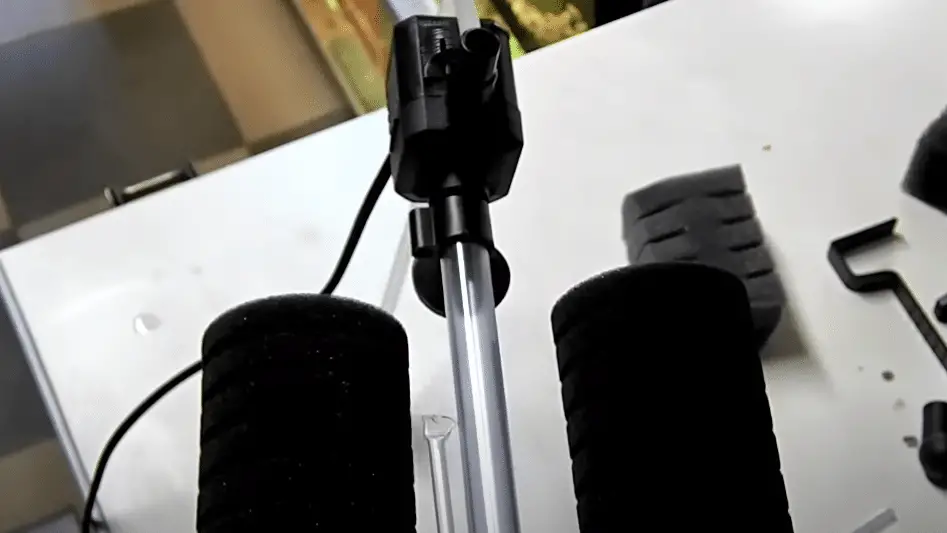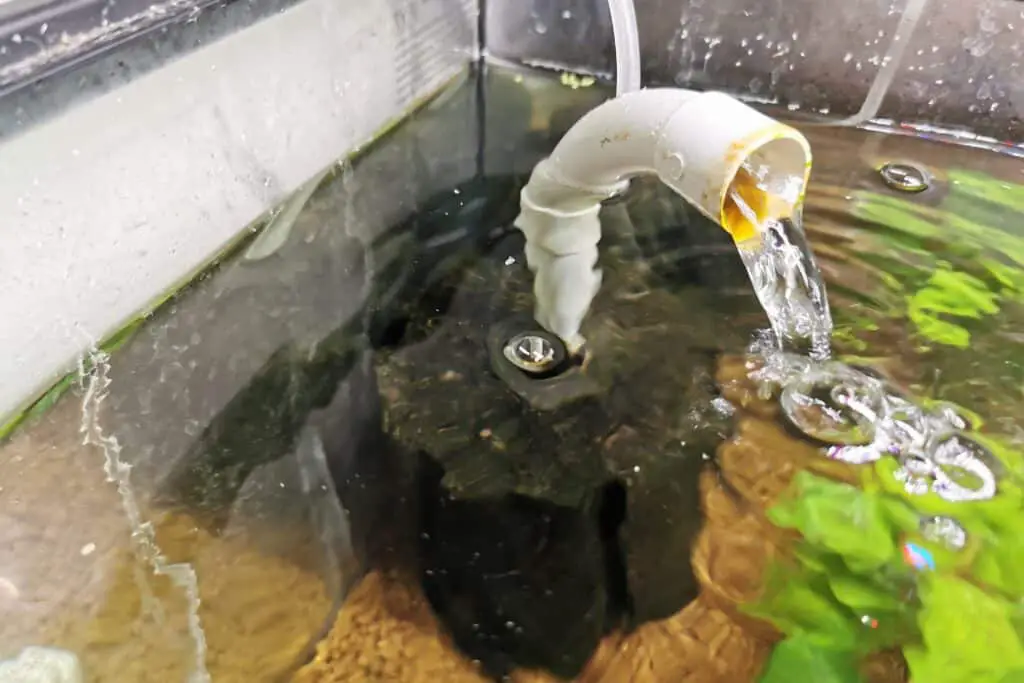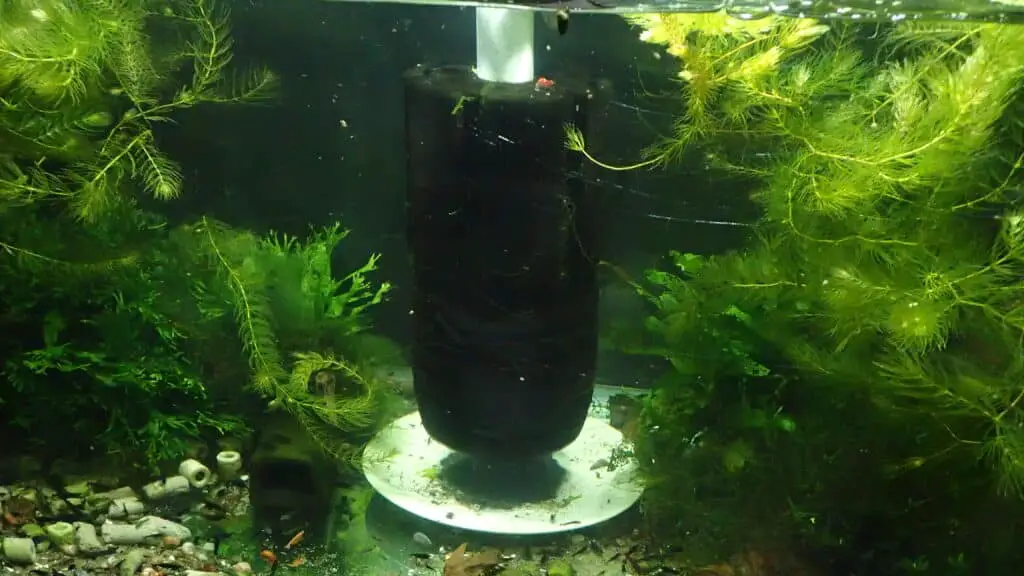Ever found yourself wondering if your sponge filter is positioned just right? You’ve followed all the guides, but something still feels off. The flow doesn’t seem quite right, and you can’t shake off the nagging feeling that your shrimplets aren’t getting the best water conditions they could. Sound familiar?
The best way to use a sponge filter is to position it upright in your tank with the base on the bottom and the outlet submerged just below the water’s surface. This setup maximizes the filter’s efficiency and minimizes noise and splashin
with the base on the bottom and the outlet submerged just below the water’s surface. This setup maximizes the filter’s efficiency and minimizes noise and splashin
Let me take you back to my early days as a shrimp keeper. I had just set up my first tank, excited to create a new home for my soon-to-be shrimp family. I had done my research, or so I thought, and was confident in my sponge filter setup.
But as the days turned into weeks, I noticed my shrimplets weren’t as active as they should be. The water flow seemed too strong, and the filter’s outlet was positioned too low. It was a challenging time, filled with trial and error, adjustments, and more than a few sleepless nights.
Over several months, I experimented with different setups, adjusting the filter’s position and monitoring the flow until I found the sweet spot. And that’s what we’re going to delve into today, the lessons learned from my journey and how you can apply them to your shrimp tank.
So, buckle up, shrimpfam, we’re about to dive deep into the world of sponge filters .
.

How Does the Positioning of a Sponge Filter Affect Its Performance?
Positioning a sponge filter in your aquarium plays a crucial role in its performance. Let’s dive into the fluid dynamics of it all. Placing your sponge filter upright in the tank
plays a crucial role in its performance. Let’s dive into the fluid dynamics of it all. Placing your sponge filter upright in the tank allows the air bubbles to rise naturally due to buoyancy.
allows the air bubbles to rise naturally due to buoyancy.
As these bubbles ascend, they create a phenomenon known as viscous drag, pulling water along with them. This upward movement of water is what drives the filtration process, as the water is drawn through the sponge where mechanical and biological filtration occurs.
Now, if the sponge filter is not positioned upright, the bubbles may not rise as efficiently, and the water may not be pulled through the sponge as effectively. This could lead to a decrease in the filter’s performance.
So, the optimal positioning of a sponge filter is typically upright and at a depth that allows for effective filtration throughout the tank. It’s a delicate balance, but when you get it right, it can significantly enhance the health and clarity of your aquarium. Remember, every tank is unique, so feel free to experiment and see what positioning works best for your shrimpfam!
Why Should the Sponge Filter Outlet Be Submerged Just Below the Water’s Surface?
Submerging the outlet of your sponge filter just below the water’s surface is a small detail that can have a big impact on your aquarium. Let’s explore why.
When the outlet of the sponge filter is submerged, it allows for a smooth, uninterrupted flow of water out of the filter. This is crucial for maintaining the continuous circulation that drives the filtration process. Once filtered through the sponge, the water needs to be returned to the tank efficiently, and having the outlet underwater facilitates this.
efficiently, and having the outlet underwater facilitates this.
Submerging the outlet also helps to minimize noise and splashing. If the outlet is above the water, the flow of water out of the filter can create splashing noises, which might be disruptive, especially if your aquarium is in a quiet room. Splashing can also lead to water evaporation and potential water damage around your aquarium .
.
Moreover, if the outlet is above the water, it could potentially disrupt the water flow, reducing the filter’s effectiveness. The bubbles rising through the sponge filter need a clear path to travel, and having the outlet underwater ensures this path is uninterrupted.
So, while it might seem like a minor detail, submerging the sponge filter outlet just below the water’s surface is essential to optimizing your filter’s performance and maintaining a peaceful and efficient aquarium environment.

What Factors Influence the Optimal Water Flow in a Sponge Filter?
Achieving the optimal water flow in a sponge filter is a bit like conducting an orchestra. Several factors need to work in harmony to create the perfect symphony of filtration. Let’s delve into these factors.
Firstly, the strength of your air pump plays a significant role. The air pump drives the bubbles that create the water flow in the sponge filter. A stronger air pump can push more air, generating more bubbles, and consequently, more water flow. On the other hand, a weaker pump might not create enough flow for effective filtration.
can push more air, generating more bubbles, and consequently, more water flow. On the other hand, a weaker pump might not create enough flow for effective filtration.
Secondly, the diameter of the pipe in your sponge filter can significantly affect the water flow. A larger diameter pipe allows more water to be moved at once, potentially increasing the overall flow rate.
However, it might also reduce the velocity of the rising bubbles, potentially reducing the flow rate. Conversely, a smaller diameter pipe can increase the velocity of the bubbles, potentially increasing the flow rate, but it also limits the amount of water that can be moved at once.
Lastly, the positioning of the sponge filter in your tank also influences the water flow. An upright position allows the bubbles to rise naturally, pulling water up with them due to viscous drag. The depth at which the sponge filter is placed can also affect the water flow.

How Do You Maintain a Sponge Filter for Long-Term Efficiency?
Maintaining a sponge filter for long-term efficiency is a key part of successful shrimp keeping. It’s not just about setting up the filter and letting it run; it’s about regular care and attention to ensure it continues to perform at its best.
One of the most important aspects of sponge filter maintenance is regular cleaning. Over time, the sponge can become clogged with debris, which can reduce the water flow and the filter’s effectiveness. To clean the sponge, remove it from the tank and give it a gentle squeeze in a bucket of tank water.
It’s important to use tank water for this process, as tap water can contain chlorine, which can kill the beneficial bacteria in the sponge.
Another crucial part of sponge filter maintenance is checking the air pump regularly. The air pump drives the bubbles that create the water flow, so it’s important to ensure it’s working properly. Clean the air pump according to the manufacturer’s instructions and replace it if it’s not producing enough air.
The positioning of the sponge filter in your tank can also affect its long-term efficiency. Make sure it’s positioned upright for optimal water flow, and adjust the depth as needed.
Lastly, keep an eye on the overall water flow in your tank. If it seems to be slowing down, it might be a sign that the sponge filter needs cleaning or that the air pump is not working properly.
In my experience, you can tell if a sponge filter needs cleaned by looking at the outlet, if you have good flow the sponge is clean however if you have just a lot of bubbles and noise the the sponges are most likey clogged up.
By taking these steps, you can maintain your sponge filter for long-term efficiency, ensuring a clean and healthy environment for your shrimpfam. Remember, a well-maintained sponge filter is a happy sponge filter!

In Closing: Mastering Your Sponge Filter Setup
Ultimately, the key to a thriving shrimp tank lies in the details, and your sponge filter setup is no exception. Positioning your sponge filter with its outlet close to the water surface ensures a gentle flow that’s just right for your shrimplets.
Regular maintenance keeps it running smoothly, providing optimal water conditions for your shrimp family.
Should you find yourself in a bind or need further guidance, don’t hesitate to reach out. If you can’t reach me here, check out Aquarium Shrimp Keeping on Facebook. We’re a community of shrimp enthusiasts always ready to lend a helping hand.
Keeping on Facebook. We’re a community of shrimp enthusiasts always ready to lend a helping hand.
Remember that every shrimp tank is unique, and what works for one might not work for another. It’s all about observing your shrimplets and making adjustments as needed. So, keep experimenting, learning, and most importantly, enjoying the journey.
Happy Sponge Filter Keeping, shrimpfam!
FAQ
Q. How can I make my sponge filter more effective? A. You can make your sponge filter more effective by ensuring it’s positioned upright in your tank, with the outlet submerged just below the water’s surface. Regular cleaning of the sponge in tank water can also enhance its performance. Additionally, using an air pump that provides an optimal flow of bubbles can improve the filter’s effectiveness.
Q. Where is the best place to put a sponge filter in an aquarium? A. The best place to put a sponge filter in an aquarium is typically in a corner, where it can effectively circulate water throughout the tank. It should be positioned upright, and the outlet should be submerged just below the water’s surface for optimal performance.
Q. How often do you squeeze a sponge filter? A. The frequency of cleaning a sponge filter can depend on the bioload of your tank, but a general guideline is to squeeze out the sponge in a bucket of tank water every 2-4 weeks. This helps remove accumulated debris and keeps the filter working efficiently.
Q. Is sponge filter effective? A. Yes, sponge filters are very effective for mechanical and biological filtration, especially in smaller tanks or tanks housing delicate or slow-moving creatures like shrimps. They provide gentle water flow and excellent surface area for beneficial bacteria to thrive.
Q. Is it okay to turn off sponge filter at night? A. It’s generally best to keep your sponge filter running 24/7. Turning it off at night can disrupt the cycle of beneficial bacteria and reduce the oxygen levels in the tank , which can be harmful to your shrimplets.
, which can be harmful to your shrimplets.
Q. What are the disadvantages of a sponge filter? A. While sponge filters are great for biological and mechanical filtration, they are not as effective for chemical filtration. They can also become clogged over time and require regular cleaning. Additionally, they may not be sufficient for larger tanks with a high bioload, and may need to be supplemented with other types of filters.
